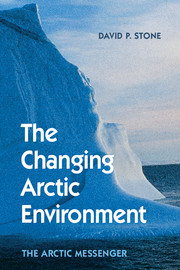Book contents
- Frontmatter
- Dedication
- Contents
- Acknowledgements
- Acronyms
- 1 Personal Beginnings
- PART I THE CHANGING ARCTIC
- PART II WORKING TOGETHER
- PART III WHAT IS THE PRESENT STATE OF KNOWLEDGE?
- PART IV WHAT DOES ALL THIS MEAN?
- Appendix I The Intergovernmental Panel on Climate Change (IPCC)
- Appendix II What Will Happen in the Future If We Do Nothing or If We Try Very Hard to Aggressively Reduce GHG Emissions: Projected Change Under Different Emission Scenarios
- Appendix III Some Geophysical Background Notes Related to Climate and Weather
- Appendix IV Orbital Forcing
- Appendix V The Concept of Commitment
- Bibliography
- Credits
- Index
Appendix III - Some Geophysical Background Notes Related to Climate and Weather
Published online by Cambridge University Press: 05 February 2015
- Frontmatter
- Dedication
- Contents
- Acknowledgements
- Acronyms
- 1 Personal Beginnings
- PART I THE CHANGING ARCTIC
- PART II WORKING TOGETHER
- PART III WHAT IS THE PRESENT STATE OF KNOWLEDGE?
- PART IV WHAT DOES ALL THIS MEAN?
- Appendix I The Intergovernmental Panel on Climate Change (IPCC)
- Appendix II What Will Happen in the Future If We Do Nothing or If We Try Very Hard to Aggressively Reduce GHG Emissions: Projected Change Under Different Emission Scenarios
- Appendix III Some Geophysical Background Notes Related to Climate and Weather
- Appendix IV Orbital Forcing
- Appendix V The Concept of Commitment
- Bibliography
- Credits
- Index
Summary
The troposphere, the stratosphere and the polar vortex:
There are only two layers of the atmosphere we need to think about in this discussion: the troposphere and the stratosphere. The troposphere extends upwards from Earth's surface to an altitude of about 18 kilometres over equatorial regions and to about 8 kilometres over the High Arctic and Antarctic. The upper boundary is known as the tropopause and is the altitude at which air ceases to cool with height. Above the tropopause lies the stratosphere, where temperature increases with altitude. This is caused by the presence of the ozone maximum layer at an altitude of between 15 and 35 kilometres. Stratospheric ozone is formed naturally at these altitudes, where solar ultraviolet radiation breaks oxygen (O2) molecules into free oxygen atoms that are then able to combine with intact oxygen molecules to produce ozone (O3). Ozone in the stratosphere absorbs solar UV radiation. Therefore, the stratospheric temperature gradient runs in the opposite direction to that seen in the troposphere, which is warmest close to Earth. This temperature trend is part of the definition of the troposphere (cooling with height) and the stratosphere (warming with height). The upper boundary of the stratosphere (the stratopause) lies at an altitude of about 50 kilometres. Above this level, temperature decreases with altitude out into space.
The stratospheric polar vortex is a large-scale region of low pressure air that is constrained by a strong west-to-east jet stream that circles the polar region. It usually has two centres: one over Baffin Island and the other over north-east Siberia. The polar vortex extends from the upper troposphere through the stratosphere. Low values of ozone and cold temperatures are associated with the air inside the vortex, which acts as a barrier to prevent the movement of air from the South.
Coriolis effect:
Earth rotates towards the east, but the velocity of rotation varies according to latitude on Earth's surface.
- Type
- Chapter
- Information
- The Changing Arctic EnvironmentThe Arctic Messenger, pp. 314 - 317Publisher: Cambridge University PressPrint publication year: 2015



